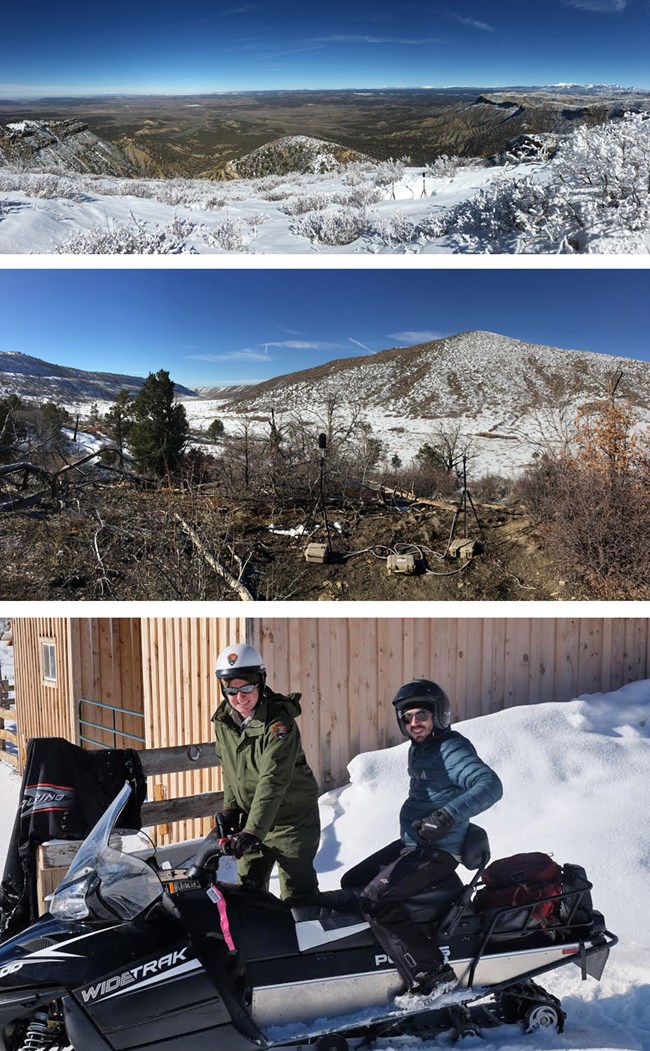
NPS
As part of a 2015-2016 field research study at Mesa Verde National Park, NPS scientists Damon Joyce and Christopher Garsha installed recording equipment to measure sounds in three distinct locations across the park. Portable battery powered packs consisting of precision calibrated, omnidirectional microphones, digital audio recorders, and sound level meters will collect highly sensitive measurements that the park will use to study changes in sound over time, and maximize quiet experiences for animals as well as park visitors. The study is in response to a Technical Assistance Request initiated by the park to gather ambient levels from both a winter and summer season.
Data gathered by the team in winter—the quietest season when activity drops due to weather—will be analyzed alongside sounds gathered in summer—the busiest (and noisiest) season with high numbers of visitors.The combined soundscapes will provide baseline ambient levels that reveal the acoustic character of Mesa Verde.
"Sounds heard at Mesa Verde in the winter might include wind, birds, and occasional wild horses," said physical scientist Damon Joyce with the Natural Sounds and Night Skies Division. "There is a marked increase in the variety and intensity of sounds heard in the summer, from human-caused sounds such as people, cars and air conditioning systems to natural sounds such as coyotes and insects. We compare these baseline measurements with future sound activity occurring inside and outside the park, and use models to predict the impact of these changes."
Different sounds can also be heard in different zones across Mesa Verde. Sounds heard in the back country and Pinyon vegetation zones will be unique from travel corridors and administrative areas. The natural sounds team helps park planners determine which zones to include in the study.
Research associates at The Listening Lab, Colorado State University are collaborating with scientists in the Natural Sounds and Night Skies Division to evaluate diverse audio data captured at Mesa Verde as well as other national parks. The information is useful in considering how developments might affect sound thresholds in the parks, and how these changes, in turn, might affect a hiker's experience, for example, or a nesting eagle's behavior. Activities such as air tours and overflight traffic, highway expansions, and construction projects produce sounds that could potentially diminish the wilderness value of place, sometimes with ecologically dire consequences. The acoustic data helps scientists, planners, rangers and other park personnel make conservation decisions that minimize impact and benefit wildlife and people.
Last updated: May 2, 2016
